The Library of Consciousness
of Consciousness
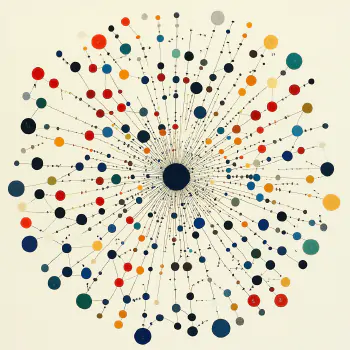
The contemplatives of all major religious traditions—from Christian monks in their monasteries to Buddhist hermits in their caves—converge upon a common awareness of rich interconnectedness. Once life is seen as a vast interconnected system, certain ethical conclusions follow. Specifically, the futility of one part of the system attacking another part of the system is revealed.
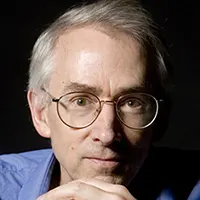
2019

Systems theory (originally called cybernetics) is a framework for analyzing how various components interact to produce an outcome within a complex entity or process. It examines the interrelationships and interdependencies between individual parts and how these contribute to the functioning of the whole system.
Systems theory originated in biology in the 1920s from the work of biologists Paul Weiss and Ludwig von Bertalanffy, but was soon applied to other fields. Key concepts in systems theory are holism, emergence, hierarchy, self-regulation, and adaptivity. Instead of reducing a system to its constituent parts and studying each in isolation, systems theory focuses on the arrangements and interactions between parts that connect them into a whole. It views systems as more than the sum of their parts—they exhibit complex behaviors that result from the interactions between the components. Systems can be embedded within higher-level systems and can contain their own subsystems in a hierarchy. Feedback processes allow systems to regulate themselves and adapt to changing conditions to maintain stability. Systems theory has been applied in developing fields like cybernetics, system dynamics, and complex systems. It has impacted research across disciplines including psychology, sociology, economics, ecology, and engineering.

A Dialogue on Metasystem Transition
Valentin Turchin explores the theory of metasystem transitions through a conversational approach, examining how new layers of control emerge when individual systems combine into a larger, integrated system. These transitions, Turchin argues, are the key moments in evolution—like stepping stones in both biological and cultural development. By viewing evolution as a series of these transformative quanta, he reflects on past evolutionary leaps and speculates on what they could reveal about the future path of universal evolution.

A Mathematical Theory of Communication
Called the “Magna Carta of the Information Age” and a “blueprint for the digital era,” this groundbreaking paper gave rise to the field of information theory and revolutionized how we understand and transmit data. By introducing the “bit” as the fundamental unit of data, Claude Shannon explained how to efficiently encode messages to reduce errors and maximize transfer speed. His innovative concepts influenced everything from the internet and telecommunications to data compression and computer science, forever changing the way we connect and share information.
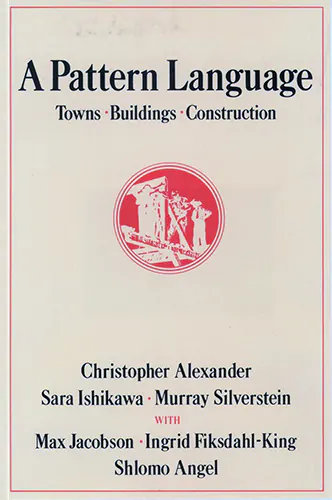
A Pattern Language
Towns, Buildings, Construction
A Pattern Language is a guide to designing spaces that feel alive and human. It presents 253 “patterns” (practical, timeless design solutions) to help create homes, buildings, and cities that truly support the way people live, connect, and thrive.

A Philosophical Look at System Dynamics
Donella Meadows discusses the philosophical foundations of system dynamics, a modeling approach used to understand complex systems. She emphasizes identifying causal relationships, feedback loops, rates of change, and states within systems. The goal is to model how a system’s structure generates its behavior over time, allowing for better understanding and potential intervention.

A Problem of Strategy
Philosophy: East and West, Program 18
Watts argues that nuclear weapons are not only immoral but strategically stupid—destroying what one aims to control. Instead, wars should be fought with non-lethal, control-focused tactics like communication disruption or immobilization, making victory possible without mutual annihilation.

A Symbiotic View of Life
We Have Never Been Individuals
For animals, as well as plants, there have never been individuals. This new paradigm for biology asks new questions and seeks new relationships among the different living entities on Earth. We are all lichens.
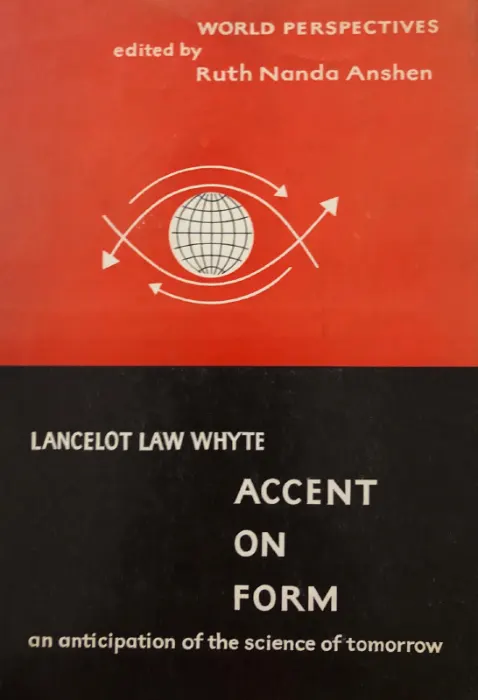
Accent on Form
According to Whyte, the next major advance in science will consist in the use of formal principles, meaning concerned with spatial form, as contrasted with individual constituent parts. This theme is developed in a crescendo from atoms to the creative power of the human intellect with disarming eloquence and elegance, with frequent taunts agsint the neglect of formal and formative principles in present-day science.
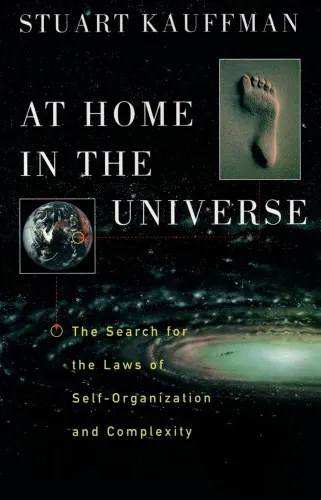
At Home in the Universe
The Search for the Laws of Self-Organization and Complexity
Stuart Kauffman’s At Home in the Universe unveils a scientific revolution centered on spontaneous order in complex systems. Kauffman argues that complexity itself triggers self-organization, revealing life as a natural outcome rather than a chance event. From cell development to cultural evolution, he explores how this principle shapes diverse phenomena. Praised as a visionary by Stephen Jay Gould and Philip Anderson, Kauffman’s work extends Darwin’s theory and offers profound insights into the essence of life.

At the Interface
Technology and Mysticism
What happens when a mystic and a futurist debate humanity’s fate? Alan Watts and Arthur C. Clarke tackle our future from two unique perspectives. Clarke champions technological solutions, from synthetic food to space exploration, while Watts argues for a spiritual evolution—a change in consciousness and our relationship with nature to solve our most pressing problems.
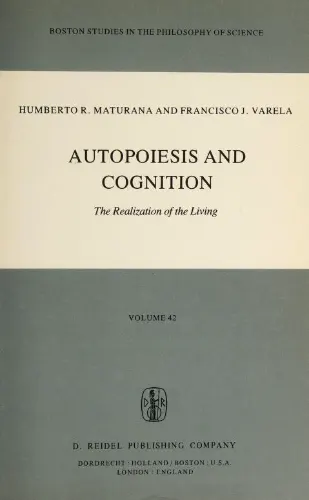
Autopoiesis and Cognition
The Realization of the Living
What makes a living system a living system? What kind of biological phenomenon is the phenomenon of cognition? These two questions have been frequently considered, but, in this volume, the authors consider them as concrete biological questions. Their analysis is bold and provocative, for the authors have constructed a systematic theoretical biology which attempts to define living systems not as objects of observation and description, nor even as interacting systems, but as self-contained unities whose only reference is to themselves. the consequence of their investigations and of their living systems as self-making, self-referring autonomous unities, is that they discovered that the two questions have a common answer: living systems are cognitive systems, and living as a process is a process of cognition. The result of their investigations is a completely new perspective of biological (human) phenomena. During the investigations, it was found that a complete linguistic description pertaining to the "organization of the living" was lacking and, in fact, was hampering the reporting of results. Hence, the authors have coined the word "autopoiesis" to replace the expression "circular organization." Autopoiesis conveys, by itself, the central feature of the organization of the living, which is autonomy.

Bang or Whimper?
Way Beyond the West, Episode 8
Alan Watts explores humanity’s technological acceleration and its consequences. He contrasts the Taoist “leave nature alone” approach with our drive for progress, questioning whether either truly serves us. Watts suggests both perspectives miss the point by fixating on survival rather than present living. Our obsession with time’s passage, he argues, distracts us from fully experiencing life itself.

Beyond Success
Ram Dass investigates the effect of success upon our individual consciousnesses and how one may see beyond mere egocentric opportunism.

Build Your Own Damn Wagon
(Laws and Freedom, Habits and Novelty)
"Do not watch, do not consume," implores Terence McKenna, inviting us on a thought-provoking journey to reclaim our humanness. By building our own conceptual wagons, rather than riding ready-made vehicles of meaning, we can travel along unique paths of critical thinking. Once within our own virtual worlds, the wonder of our distinctive minds will be open for discovery.
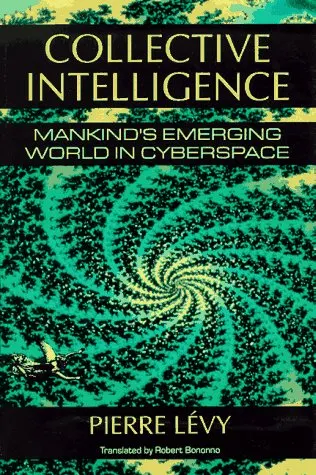
Collective Intelligence
Mankind's Emerging World in Cyberspace
The number of travelers along the information superhighway is increasing at a rate of ten percent a month. How will this communications revolution affect our culture and society? Though awed by their potential, we’ve feared computers as agents of the further alienation of modern man: they take away our jobs, minimize direct human contact, even shake our faith in the unique power of the human brain. Pierre Lévy believes, however, that rather than creating a society where machines rule man, the technology of cyberspace will have a humanizing influence on us, and foster the emergence of a “collective intelligence”—a meeting of minds on the Internet—that will validate the contributions of the individual.

Collective Memory, Group Minds, and the Extended Mind Thesis
While memory is conceptualized predominantly as an individual capacity in the cognitive and biological sciences, the social sciences have most commonly construed memory as a collective phenomenon. Collective memory has been put to diverse uses, ranging from accounts of nationalism in history and political science to views of ritualization and commemoration in anthropology and sociology. These appeals to collective memory share the idea that memory ‘‘goes beyond the individual’’ but often run together quite different claims in spelling out that idea. This paper reviews a sampling of recent work on collective memory in the light of emerging externalist views within the cognitive sciences, and through some reflection on broader traditions of thought in the biological and social sciences that have appealed to the idea that groups have minds. The paper concludes with some thoughts about the relationship between these kinds of cognitive metaphors in the social sciences and our notion of agency.

Conceptions of a Global Brain
an Historical Review
Imagine a giant, intelligent brain made of humanity and its computers—the Global Brain. This idea blends views of society as a living organism, a universal encyclopedia, and an emerging higher consciousness. Global networks like the Internet not only share information but also learn and adapt together. By combining insights from evolution and cybernetics, we can overcome conflicts and build a collective intelligence that makes solving world problems more efficient and creative.

The Trigger Effect
Connections, Season 1, Episode 1
Both the beginning and the end of the story are here. The end is our present dependence on complex technological networks illustrated by the NYC power blackouts. Life came almost to a standstill: support systems are taken for granted failed. How did we become so helpless? The technology originated with the plow and agriculture. Each invention demands its own follow-up: once started, it is hard to stop. This segment ends in Kuwait, where society has leaped from ancient Egypt to the technology of today in 30 years.

Conscious Evolution
Our Next Stage
Barbara explored the ideas of Pierre Teilhard de Chardin, and the possibilty of humanity gradually giving birth to a new planetary-scale consciousness, which she called Homo universalis.

Consciousness, Biology, Universal Mind, Emergence, Cancer Research
Biology’s deepest truths don’t live at the molecular bottom. Michael Levin argues that intelligence, goals, and selves emerge across scales: cells learn, tissues navigate, and cancer shrinks a collective mind’s horizon. Life is intelligence embodied—defined by the size of what it can care about, remember, and become.
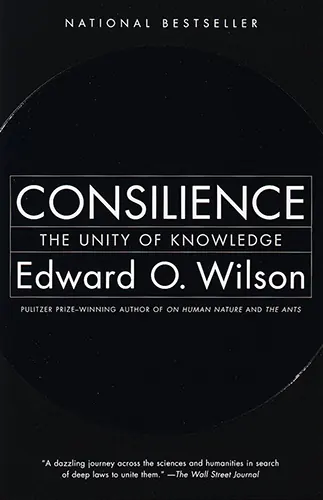
Consilience
The Unity of Knowledge
In Consilience (a word that originally meant “jumping together”), Edward O. Wilson renews the Enlightenment's search for a unified theory of knowledge in disciplines that range from physics to biology, the social sciences and the humanities. Using the natural sciences as his model, Wilson forges dramatic links between fields. He explores the chemistry of the mind and the genetic bases of culture. He postulates the biological principles underlying works of art from cave-drawings to Lolita. Presenting the latest findings in prose of wonderful clarity and oratorical eloquence, and synthesizing it into a dazzling whole, Consilience is science in the path-clearing traditions of Newton, Einstein, and Richard Feynman.

Conversations with Paolo Soleri
Paolo Soleri's architectural-philosophical thinking sets forth fundamental reformulations to address the globalizing world's most urgent environmental, urban infrastructural, and socio-ethical problems. In this book, Soleri's most recent ideas are distilled into an accessible overview for the general reader. Soleri proposes to transform our societal systems while raising sights to a radically long-term and humanistic perspective. Among the interrelated concepts outlined here are Soleri's highly original ideas of orchid and forest, the city as hyper-organism, the urban effect, and the love project. These inspiring ideas are acutely timely in light of current environmental trends: responding to global climate change, radically reducing oil dependence, embracing frugality and reduced consumption, while simultaneously confronting issues of suburban sprawl, urban renewal, smart land use, and wise food production.
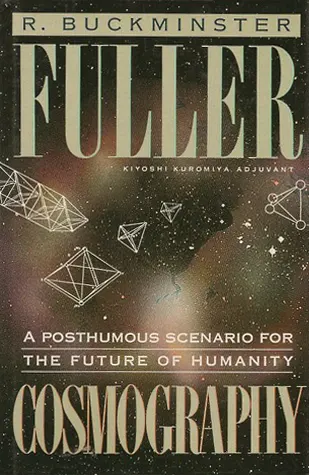
Cosmography
A Posthumous Scenario for the Future of Humanity
An ambitious synthesis of Fuller’s lifetime of interdisciplinary work, spanning geometry, systems theory, design, and cosmology. He outlines synergetic principles underlying natural structures, sustainable architecture like geodesic domes, and humanity’s potential through whole systems thinking and technologies in equilibrium with the universe’s finite resources. Dense but visionary, it encapsulates Fuller’s goal of developing a “Cosmography”—a coordinated model for all knowledge.
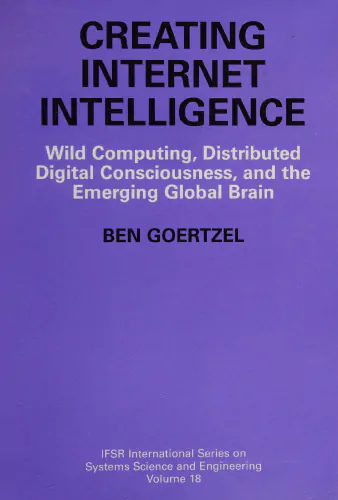
Creating Internet Intelligence
Wild Computing, Distributed Digital Consciousness, and the Emerging Global Brain
Creating Internet Intelligence explores the potential for global computer networks to evolve into autonomous intelligent systems, offering practical guidance for shaping this future. It presents a theory of intelligent systems and examines “Internet intelligence” through commercial, social, psychological, and philosophical lenses. Goertzel details pioneering software like the Webmind AI Engine and Webworld platform, designed to seed this evolution. This interdisciplinary work appeals to computer scientists, philosophers, and anyone intrigued by the intersection of technology, intelligence, and human life.
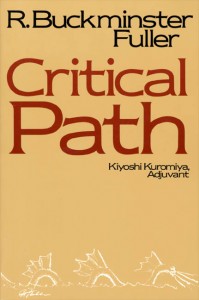
Critical Path
Critical Path is Fuller’s master work—the summing up of a lifetime’s thought and concern—as urgent and relevant as it was upon its first publication in 1981. The book details how humanity found itself in its current situation—at the limits of the planet’s natural resources and facing political, economic, environmental, and ethical crises. The crowning achievement of an extraordinary career, Critical Path offers the reader the excitement of understanding the essential dilemmas of our time and how responsible citizens can rise to meet this ultimate challenge to our future.
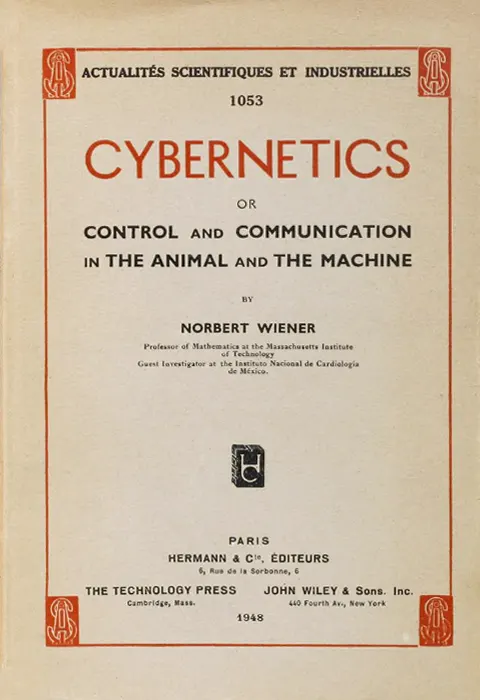
Cybernetics
Control and Communication in the Animal and the Machine
Acclaimed as one of the "seminal books comparable in ultimate importance to Galileo or Malthus or Rousseau or Mill", Cybernetics was judged by twenty-seven historians, economists, educators, and philosophers to be one of those books which may have a substantial impact on public thought and action in the years ahead.
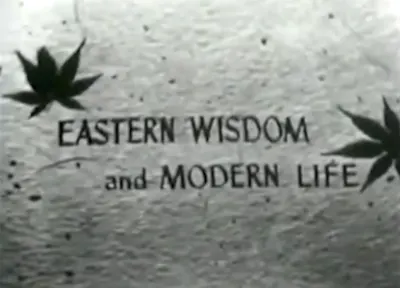
Things and Thinks
Eastern Wisdom and Modern Life (Episode 2)
Alan Watts presents an explanation of the East Indian idea of māyā: the division of the world into separate things and events is a work of human thought and not a fact of nature. Watts examines the disastrous consequences of confusing thought with fact.

Omnipotence
Eastern Wisdom and Modern Life (Episode 13)
Watts explores the contrast between organic and mechanical world views and the difference between the growing process and the making process, and he explains why one corresponds to a democratic principle and the other to a monarchical hierarchy.

The Life of Zen
Eastern Wisdom and Modern Life (Episode 14)
A look inside Zen monastic life and practice reveals a culture of dialog and subtle humor between master and student.

Eco Zen
Imagine realizing you are not just a wave, but the entire ocean! In this talk, Alan Watts skillfully guides us through Zen concepts, explaining how techniques like kōans break down our false sense of a separate self, leading to the profound realization that we are the whole flowing universe.
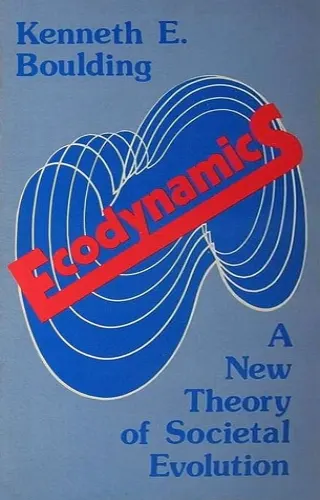
Ecodynamics
A New Theory of Societal Evolution
Embark on a captivating journey into Ecodynamics, a realm where the choreography of humanity and nature unfolds. This narrative intricately weaves economics, ecology, and human behavior, illuminated by Boulding's visionary concept of ecodynamics. His framework reveals the harmonious yet fragile bond between ecosystems and economies, a bond often ignored at our peril. Boulding's interdisciplinary exploration spans from population dynamics to resource usage and technology's role, dismantling the myth of infinite growth in a finite world. Ecodynamics challenges norms, offering profound insights that beckon us to adopt sustainable practices. This clarion call echoes—safeguard both civilization and the environment for lasting well-being.

Following the Middle Way
Awaken and find peace. Alan illuminates the path out of suffering with Buddhist philosophy as our guide. Through practicing the Noble Eightfold Path of skillful understanding, action, meditation, and concentration, we walk the Middle Way to freedom from clinging and awaken to our interconnected nature.
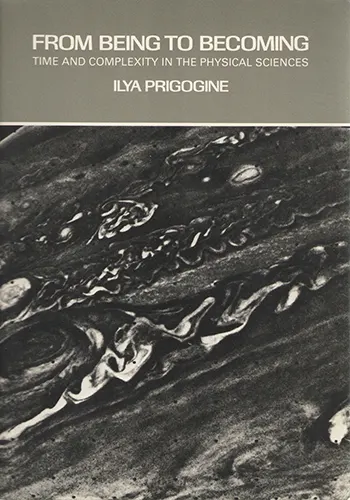
From Being to Becoming
Time and Complexity in the Physical Sciences
How has order emerged from chaos? In this book, intended for the general reader with some background in physical chemistry and thermodynamics, Ilya Prigogine shows how systems far from equilibrium evolve elaborate structures: patterns of circulation in the atmosphere, formation and propagation of chemical waves, the aggregation of single-celled animals. In an effort to understand these phenomena, he explores the philosophical implications of the work for which he received the 1977 Nobel Prize in Chemistry. From Being to Becoming explains how order can develop and offers a new approach to the asymmetry between past and future—the irreversibility of time. Prigogine presents an evolving rather than static world. This imaginative work is sure to arouse controversy and may change the way that the reader sees the laws of science and the world that those laws seek to explain.

From Mechanistic to Systemic Thinking
Ackoff states that humanity is in the early stage of a transition from the Machine Age to the Systems Age. The Machine Age was characterized by belief in complete understandability of the universe, analysis as a method of inquiry, and cause and effect as a sufficient relationship to explain all. The dilemma that disrupted such beliefs was systems thinking. The Machine Age began to die when humanity gave up the principle of understandability. Gradually, it’s become accepted that there can be no complete understanding of the universe because nothing can be understood independently of its environment—all is environmentally relative. While analysis produces knowledge, it is synthesis that produces understanding. Furthermore, the Systems Age recognizes that cause and effect is just one way of looking at reality among an infinite number.
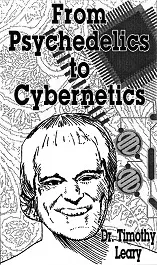
From Psychedelics to Cybernetics
Timothy Leary journeyed through Europe as head of the psychedelic revolution and consciousness research movement, and he invited some of his tagalong friends to this evening lecture held at the "Alte Feuerwache" in Mannheim to talk about the future evolution of humanity.

Future of Communications
Part 1
Our seeming separation is but a trick of the light, for in truth we are all one, connected like dewdrops on a spider's web. As technology traverses the illusory distance between us, it leads us back to the recognition of our inherent unity. Communication, once imagined as bridges between islands, dissolves as we awaken to find ourselves a sea; not separate, but an oceanic communion. We return home.

Future of Politics
Watts argues against the traditional Western concept of politics and the idea of a powerful leader governing a nation. Instead, he proposes a more Eastern approach inspired by the Tao Te Ching, which emphasizes flexibility, spontaneity, and water-like qualities in leadership. He encourages leaders to avoid using force and to embrace the natural flow of events, allowing the governed to live their lives freely. A society modeled after this philosophy would be more harmonious and functional, as opposed to societies driven by hierarchical structures and coercion.
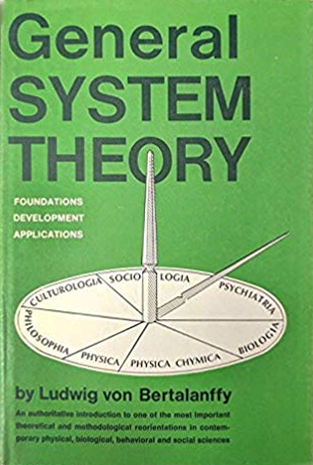
General System Theory
In his seminal work, biologist Ludwig von Bertalanffy outlines a theory of systems that breaks down disciplinary boundaries and argues that there are general principles and laws applicable to systems of all kinds. He contends that phenomena should be viewed not in isolation but as components of systems interacting with their environments. Bertalanffy proposes that there are commonalities across biological, physical, and social systems that can be explored through systems thinking. He suggests the need for an overarching systems science to uncover these universal system principles. The book develops key concepts like open and closed systems, steady states, growth, feedback, homeostasis, differentiation, hierarchy, and emergence. General System Theory was groundbreaking in its interdisciplinary approach and helped foster the growth of systems theory across academia and society.
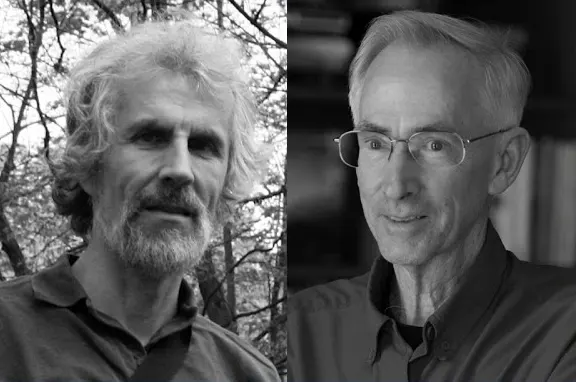
Glimpsing the Global Brain
Complex systems theorist Heylighen and evolutionary biologist Wilson discuss a possible phase transition of humanity in which the members of our species become neurons in a planetary brain, utilizing the Internet as a shared exocortex.

Global Brain
Foundations of a Distributed Singularity
Cadell Last discusses the concept of a “Global Brain”—a distributed, self-organizing superintelligence emerging from the interconnectedness of humans and information-communication technologies. He explores the metaphorical, evolutionary, and cybernetic foundations of this potential phenomenon and its implications for human civilization, suggesting it may lead to a future of increased intelligence, cooperation, and abundance.

God and Golem, Inc.
A Comment on Certain Points Where Cybernetics Impinges on Religion
Norbert Wiener explores the ethical and philosophical implications of artificial intelligence and cybernetics, examining the potential dangers of creating machines that mimic human thought and the consequences of playing God by designing systems that could surpass human control. The book delves into the intersection of technology, religion, and ethics, questioning humanity's role in an increasingly automated world.

Having Archaic and Eating it Too
Feeding back to the psychedelic community of Los Angeles, Terence McKenna delivers colorful and astounding visual transformations. He weaves a galactic tapestry of art-tickled articulations of the history and future of psychedelic alchemy, the government/culture clash, and the surging general ordering of chaos from UFOs to archaic shamanism. This recording will amuse anyone interested in subjects ranging from eco-tourism to techno-junkies.

Hominization
Introduction to a Scientific Study of the Phenomenon of Man
In one of his earliest writings on the topic, Teilhard de Chardin explores humanity’s unique place in evolution. He argues that humans represent an entirely new phase of life on Earth—the noosphere, or sphere of conscious thought. While physically similar to other primates, humans are revolutionary in their ability to use tools, form global connections, and reflect on their own existence. This self-awareness comes with both great power and great risk, as humans can choose to either advance or resist evolution’s push toward greater consciousness and unity.

Human Metasystem Transition (HMST) Theory
This article proposes a theory of human evolution termed Human Metasystem Transition (HMST), suggesting that major transitions in human organization have been facilitated by the emergence of new information media and energy sources. It posits that the current convergence of the Internet and renewable energy could catalyze a fourth metasystem transition, leading to a global superorganism with compressed spatial and temporal dimensions of human interaction.
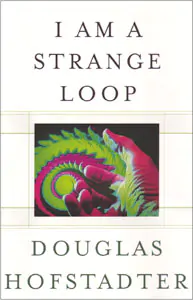
I Am A Strange Loop
Douglas Hofstadter examines in depth the concept of a strange loop to explain the sense of "I".
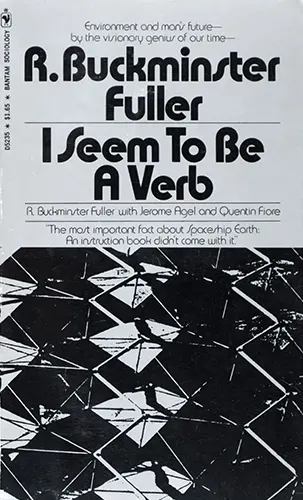
I Seem To Be a Verb
Buckminster Fuller's explorations as an architect, engineer, philosopher and futurist are here extended into experimental book form. Packed with utopian plans, clever insights and light-hearted musings, all aimed at reminding us that we are verbs, not nouns, and that we are never, ever, stuck with life as it is as we can create things.
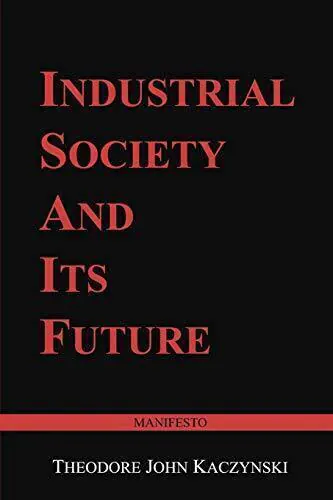
Industrial Society and Its Future
The Unabomber Manifesto
The anti-technology essay by Ted Kaczynski, also known as the Unabomber. His manifesto contends that the Industrial Revolution began a harmful process of natural destruction brought about by technology, while forcing humans to adapt to machinery, creating a sociopolitical order that suppresses human freedom and potential.
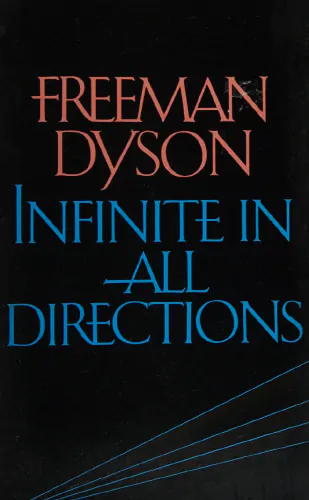
Infinite in All Directions
Infinite in All Directions explores science and religion as two complementary ways of understanding the universe. Based on Freenman Dyson's Gifford Lectures, the book celebrates diversity, both in the natural world and human responses to it. Dyson contrasts different scientific approaches using Manchester and Athens as symbols. He delves into the origin and evolution of life, highlighting how life thrives on diversity. In the final chapter, Dyson speculates on the future of life and the universe, blending science with a touch of science fiction and theology.
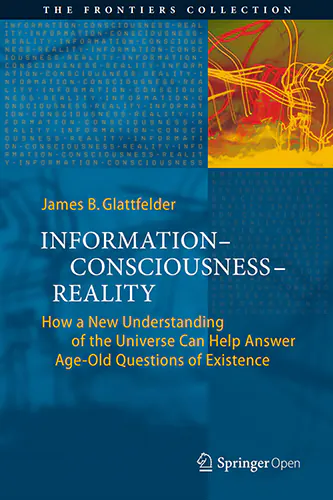
Information — Consciousness — Reality
How a New Understanding of the Universe Can Help Answer Age-Old Questions of Existence
This open access book chronicles the rise of a new scientific paradigm offering novel insights into the age-old enigmas of existence. Over 300 years ago, the human mind discovered the machine code of reality: mathematics. By utilizing abstract thought systems, humans began to decode the workings of the cosmos. From this understanding, the current scientific paradigm emerged, ultimately discovering the gift of technology. Today, however, our island of knowledge is surrounded by ever longer shores of ignorance. Science appears to have hit a dead end when confronted with the nature of reality and consciousness. In this fascinating and accessible volume, James Glattfelder explores a radical paradigm shift uncovering the ontology of reality. It is found to be information-theoretic and participatory, yielding a computational and programmable universe.

Information-Energy Metasystem Model
The human system is developing into a global biocultural superorganism, yet existing control systems appear inadequate for aligning a stable global goal state. Cadell Last proposes the Information-Energy Metasystem Model (IEMM), exploring human control system transitions throughout history. Drawing from cybernetic theories, the IEMM posits that major control transitions depend on specific information-energy control and feedback properties. As humanity approaches a potential fourth metasystem, Last argues for distributed, digital, and democratic mechanisms to organize a global commons, harnessing collective intelligence and direct democracy.

Intelligent Machinery, A Heretical Theory
In this posthumously-published essay Alan Turing foresees thinking machines surpassing human intelligence. He proposes building them to store memories, index experiences, and learn over time. With proper “education” and a dash of randomness, Turing believes machines could one day converse, play games, and even subsume people’s “feeble powers.” Though we cannot fully grasp this future, Turing saw momentous possibility if society supports cybernetic evolution.

Interview on Cybernetics
Heinz von Förster delves into the enigmatic realm of cybernetics. The conversation dances around the essence of this field, exploring its core principles of circularity, self-organization, and the nature of information. Together with Sherwin Gooch, he grapples with profound questions surrounding the definition of life, the Gaia hypothesis, and the tantalizing possibility of replicating human consciousness. Ultimately, the dialogue underscores the intricate interplay between observer and observed, challenging conventional notions of information and reality.

Levels of Magnification
Philosophy: East and West, Program 26
We’re living under the shadow of potential catastrophe—atomic testing, global tension, and existential dread—yet many seem hypnotized into indifferent routine. Our personal struggles mirror a cosmic dance: just as the birth and death of cells form a healthy body, our conflicts may contribute to a larger, mysterious harmony. Embracing uncertainty with a broader sense of identity, rather than succumbing to panic or despair, might just be the secret to living wisely in this unpredictable, yet oddly charming, cosmic experiment.
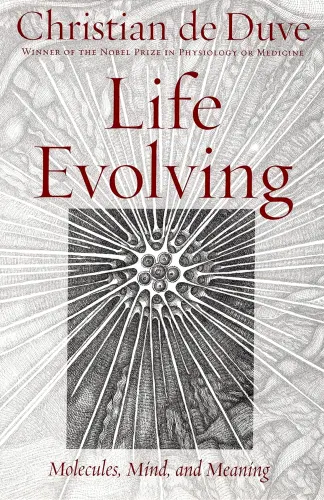
Life Evolving
Molecules, Mind, and Meaning
Christian de Duve, a Nobel Prize-winning biologist, takes readers on a journey through the biological world, from the tiniest cells to the future of life. He argues that life was bound to arise and discusses the evolution of humans, consciousness, language, science, emotion, morality, altruism, and love. De Duve concludes by speculating on humanity's future, including the possibility of evolving into a new species, and shares his thoughts on God and immortality. This wise and humane book sums up his learnings about life and our place in the universe.

Light of the Third Millennium
Speaking at the Whole Life Expo in Palmer Auditorium, Terence says our task is to surf the accelerating wave of novelty to dissolve cultural delusions. Psychedelics and technology can download new perspectives, stripping away outdated assumptions. Through imagination, language, and art we can meet the eschaton: the transcendental object at the end of time. Our task is liberate ourselves, take responsibility for our ideas, make visionary art, and find community without fear.

Man in Universe
Through cosmic timescales, humanity has voyaged in its vessel Earth, navigating by the star-charts of knowledge. Now we enter unmapped seas, led on by curiosity's compass. Though frail, our minds pilot mighty technologies, taming invisible forces to reshape our world. If we attune to the celestial rhythms resonant in matter's deepest reality, we may yet fulfill our odyssey's purpose—to be worthy stewards of the living jewel suspended in the eternal darkness.

Man's Place in the Universe
Reflexions on Complexity
In this unusually personal essay, Teilhard speaks almost across the table, inviting us to rethink our cosmic standing. He shows how humanity, once dwarfed by vast space and tiny particles, regains significance through a third dimension of reality: complexity. As matter organizes itself into ever-deeper centers, consciousness rises—and in us, becomes self-aware. Humanity is not a cosmic accident, he suggests, but the universe awakening to itself and preparing its next leap.

Manifestation of Avalokiteshvara
Avalokiteshvara: a multi-armed being embodying compassion and life's bewildering beauty! Like the centipede who tripped by overthinking its legs, we get stuck in ego-driven control. Alan urges us to embrace the spontaneous universe, find action in letting go, and realize we're interconnected parts of a grand, unfolding whole. True action arises effortlessly when we stop trying to control everything.

Matter, Mind and Models
In this paper, Minsky ponders the enigmatic relationship between the physical and metaphysical. He suggests our inner worlds are bisected—part mechanical, part magical. This split identity leads to tangled beliefs when we probe our own natures. Though science may someday bridge the body and soul, Minsky foresees our hearts ever holding fast to ghosts in the machine. For in the end, we are but Patchwork Men—stitches of logic and fantasy, reason and madness, particles and dreams.

Megatripolis Opening Night
Terence McKenna discusses the discovery of a new legal psychedelic compound from the salvia divinorum plant. He argues that humanity is on the brink of a cultural transformation driven by the accelerating production of novelty in the universe, enabled by psychedelics and technology. He envisions a transcendental future where boundaries dissolve and consciousness evolves.
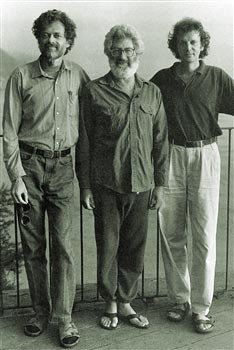
Metamorphosis
Join McKenna, Sheldrake, and Abraham on an imaginative journey into nature's creativity. Surfing the chaotic waters of psychedelic states, they catch glimpses of the Gaian mind behind Earth's being. Here, in imaginal realms beyond rationale, novelty is born. By relinquishing egoic control and surrendering to an unknowable creative force, we tap into the divine imagination—the eternal wellspring of nature's endless becomings. Immersing ourselves in this flow, we reunite with the cosmic creative essence.
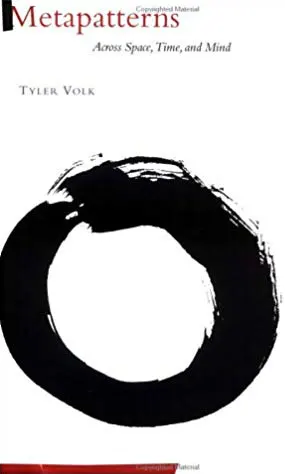
Metapatterns
Across Space, Time, and Mind
In the interdisciplinary tradition of Buckminster Fuller’s work, Gregory Bateson’s Mind and Nature, and Fritjof Capra’s Tao of Physics, Metapatterns embraces both nature and culture, seeking out the grand-scale patterns that help explain the functioning of our universe. Metapatterns begins with the archetypal patterns of space, both form-building and relational. Tyler Volk then turns to the arrows, breaks, and cycles that infuse the workings of time. With artful dexterity, he brings together many layers of comprehension, drawing on an astounding range of material from art, architecture, philosophy, mythology, biology, geometry, and the atmospheric and oceanographic sciences. Richly illustrating his metapatterns with a series of sophisticated collages prepared for this book, Volk offers an exciting new look at science and the imagination. As playful and intuitive as it is logical and explanatory, Metapatterns offers an enlightening view of the functional, universal form in space, processes in time, and concepts in mind.

Mind As Society
Conscious intelligence may be viewed as a computer system composed of many smaller parallel processing programs. Marvin Minsky, Ph.D., is one of the acknowledged founders of the mathematical theory of computation, artificial intelligence, and robotics. He argues that understanding the individual as a very sophisticated machine actually affirms human dignity.

Mind Outside Brain
A Radically Non-Dualist Foundation for Distributed Cognition
We approach the problem of the extended mind from a radically non-dualist perspective. The separation between mind and matter is an artefact of the outdated mechanistic worldview, which leaves no room for mental phenomena such as agency, intentionality, or feeling. We propose to replace it by an action ontology, which conceives mind and matter as aspects of the same network of processes. By adopting the intentional stance, we interpret the catalysts of elementary reactions as agents exhibiting desires, intentions, and sensations. Autopoietic networks of reactions constitute more complex super-agents, which moreover exhibit memory, deliberation and sense-making. In the specific case of social networks, individual agents coordinate their actions via the propagation of challenges. The distributed cognition that emerges from this interaction cannot be situated in any individual brain. This non-dualist, holistic view extends and operationalises process metaphysics and Eastern philosophies. It is supported by both mindfulness experiences and mathematical models of action, self-organisation, and cognition.
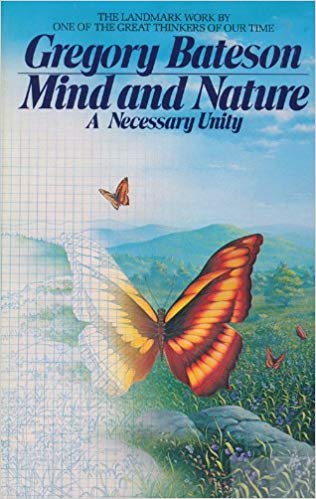
Mind and Nature
A Necessary Unity
Renowned for his contributions to anthropology, biology, and the social sciences, Bateson asserts that man must think as Nature does to live in harmony on the earth and, citing examples from the natural world, he maintains that biological evolution is a mental process.

Not What Should Be, But What Is
Alan reminds his audience that our mental image of the world is just an internal fairy tale loosely related to the truth of reality. Paying attention to our immediate sensory experiences can therefore help us lift this thought-tainted veil, an action which reveals the magic of being far better than any words ever could.

Note on the Present Reality and Evolutionary Significance of a Human Orthogenesis
Has evolution stalled at humanity? No, says Teilhard—it has shifted. As biology grows more complex, humans fuse into a collective mind, revealing that evolution is becoming self-directed. In us, life stops merely unfolding and begins consciously arranging the world and itself.

On Second-Order Observation and Genuine Pretending
Coming to Terms with Society
This paper discusses the meaning of the concept of ‘second-order observation’ used by Niklas Luhmann (1927–1998). Luhmann identifies second-order observation as a defining characteristic of modern world society. According to Luhmann, all social systems construct a social reality on the basis of the observation of observations. Rating agencies in the economy or the peer-review process in the academic system are examples of social mechanisms manifesting second-order observation. Social media also represent organized second-order observation. The paper suggests that in a society based on second-order observation, ‘genuine pretending’ is an adequate mode of existence. This notion is derived from the Daoist text Zhuangzi. It indicates a disassociation from social roles which allows their performers to exercise these roles with ease and, at the same time, maintain a state of sanity. (Published in Thesis Eleven 2017, Vol. 143(I) 28–43.)

On Self-Organizing Systems and Their Environments
An adaptation of an address given at The Interdisciplinary Symposium on Self-Organizing Systems in Chicago, Illinois. Von Förster argues self-organizing systems don't exist in isolation but require an environment to draw energy and order from. He defines measures of order and mechanisms whereby order arises, including via internal "demons" that decrease system entropy and external "demons" that increase maximum possible entropy. Overall, some noise helps systems remain adaptable.

On the Decrease of Entropy in a Thermodynamic System by the Intervention of Intelligent Beings
Could an intelligent being bypass the Second Law of Thermodynamics and create endless energy? Leo Szilard tackled this “perpetual motion” challenge in 1929. He demonstrated that any measurement made by an intelligent being, which might seem to decrease entropy, is inherently accompanied by an equal or greater production of entropy, thus preserving the fundamental law.

On the Nature of the Phenomenon of Human Society, and its Hidden Relationship with Gravity
We stand at the dawn of a new era for humanity. As Teilhard de Chardin observed, cosmic forces are propelling our social evolution. Though born of gravitational forces, our consciousness now rises with its own creative power to bring forth previously unimagined realms of thought and social organization. Our future lies in our hands.

On the Probable Coming of an ‘Ultra-Humanity’
Reflections of a Biologist
Teilhard talks about a vast realm of the Ultra-Human which lies ahead of us: a realm in which we shall not be able to survive, or super-live, except by developing and embracing on earth, to the utmost extent, all the powers of common vision and unanimazation that are available to us.
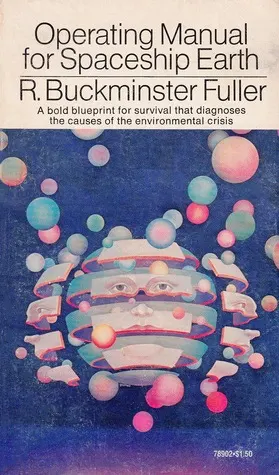
Operating Manual for Spaceship Earth
In this essay on man, Mr. Fuller expresses what may well be his penultimate view of the human condition. Here, in a mood at once philosophical and involved, he traces humanity's intellectual evolution and weighs our capability for survival on this magnificent craft, this Spaceship Earth, this superbly designed sphere almost negligible in dimension compared to the great vastness of space. Mr. Fuller is optimistic that we will survive and, through research and development and increased industrialization, generate wealth so rapidly that we can do very great things. But, he notes, there must be an enormous educational task successfully accomplished right now to convert our tendency toward oblivion into a realization of his potential, to a universe-exploring advantage from this Spaceship Earth.

Outline of a Dialectic of Spirit
Teilhard de Chardin explores how human understanding evolves through a dynamic interplay between the known and the unknown, like a spark leaping back and forth. He argues that the universe is driven by a rising complexity and consciousness, culminating in humanity. This progression points toward an ultimate convergence, or “Omega Point,” which he identifies with a transcendent God. Teilhard connects this cosmic evolution to Christianity, suggesting that Christ embodies this divine culmination, uniting the material and spiritual realms in a harmonious, evolving whole.
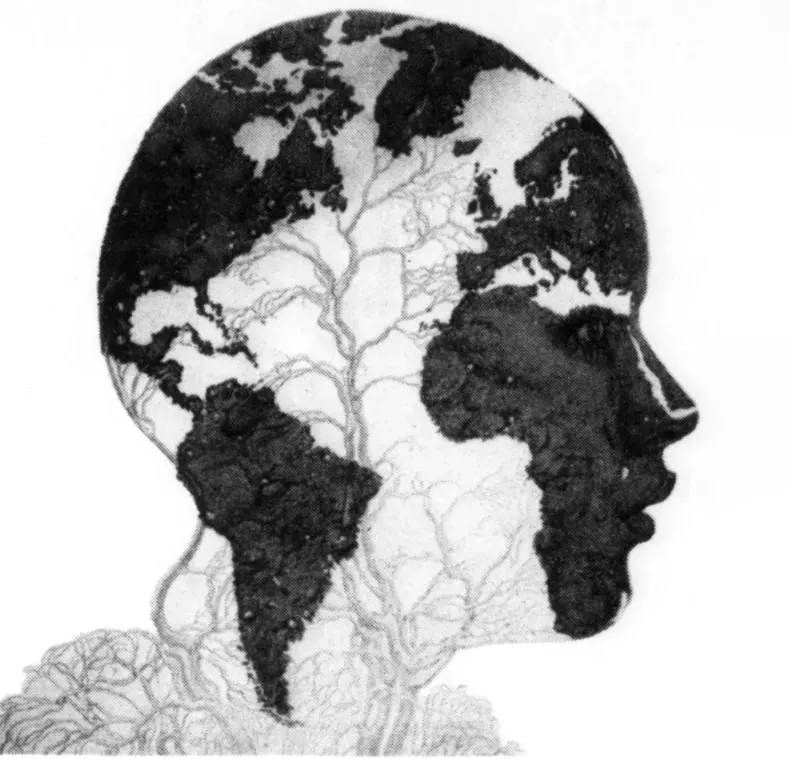
Plan, Plant, Planet
McKenna urges us to look at plants more deeply and find within their biological organization a model for sustainable modern civilization.

Planetary Consciousness
Prof. Erwin Lazlo speaks about the need for a new ethics of planetary consciousness. The interview was produced by Peter Ocskay in 1997 for the Baltic University Programme TV-series Mission Possible.

Power of Space
Weaving connections between Eastern thought and modern science, Alan Watts explores the wonder of space. For him, space is no mere emptiness but a cosmic tapestry integral to existence. He draws parallels between space and the Buddhist void, seeing both as the interwoven ground of being that allows consciousness to emerge.
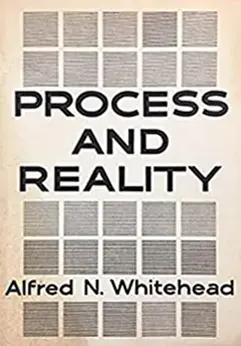
Process and Reality
An Essay in Cosmology
One of the major philosophical texts of the twentieth century, Process and Reality is based on Alfred North Whitehead’s influential lectures that he delivered at the University of Edinburgh in the 1920s. In it, he propounds a philosophy of organism (or process philosophy), in which the various elements of reality are brought into a consistent relation to each other. It is also an exploration of some of the preeminent thinkers of the seventeenth and eighteenth centuries, such as Descartes, Newton, Locke, and Kant.
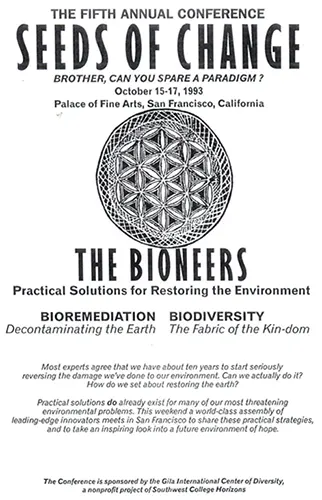
Reawakening our Connection to the Gaian Mind
In a passionate plea, McKenna urges us to embrace psychedelic experiences as a means to dissolve boundaries, connect with the Gaian mind, and find the vision necessary to address the ecological crises threatening our planet. Advocating a radical shift towards eco-consciousness, he calls for a global community built on love, responsibility, and reverence for the wisdom of nature.

Religion Of No Religion
Alan Watts explores the idea of the bodhisattva doctrine in Mahayana Buddhism, which suggests that true enlightenment is found in the ordinary, secular world. He delves into the concept of jiji muge, the mutual interdependence of all things, where every person, object, and event is both insignificant and essential to the whole. Watts argues that true spirituality lies in recognizing the sacred in the mundane, without the need for overt religious symbolism or ritual.

Reviving the Archaic
A New View of Evolution
Terence McKenna unveils an “archaic revival” that could save humanity and our planet. He makes the controversial claim that psychedelic plants catalyzed the emergence of human consciousness, language, and our fertile imaginations eons ago. McKenna advocates reviving the shamanic practices and partnership values of our prehistoric ancestors to transcend the isolated ego and re-establish a symbiotic relationship with nature’s “great piece of integrated linguistic machinery.” His boundary-dissolving ideas shatter conventional thinking about our past, present, and the transformative possibilities for our collective future.
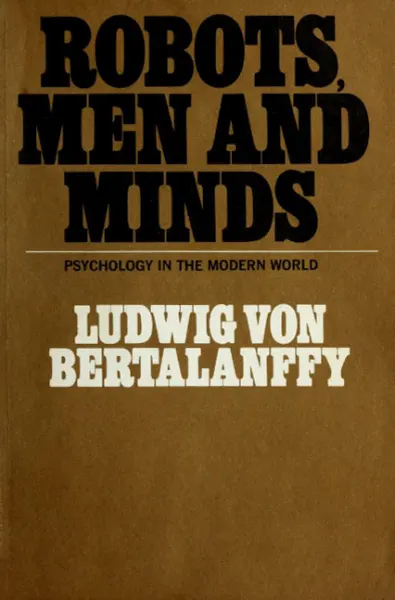
Robots, Men, and Minds
Psychology in the Modern World
Based on lectures delivered as The Inaugural Lectures in The Heinz Werner Lecture Series at Clark University (Worcester, Mass.) in January 1966, the book introduces new conceptions of humans and their world. After discussing the advantages and drawbacks of humanity's propensity for the symbolic construction of reality, it focuses on the systems approach to an understanding of the species. The author warns against the common error of identifying cybernetics with general systems theory. No matter how complex the cybernetic system, it "can always be resolved into feedback circuits" and thought of in terms of "linear causality." The regulative behavior of general systems is determined by goal-directed, dynamic interaction between many forces and variables in an open system. Bertalanffy points out that "no comprehensive theory of systems exists today." As a model, however, the approach has many advantages, such as obviating the need for the "ghost in the machine" and suggesting some solutions to the mind-body problem.
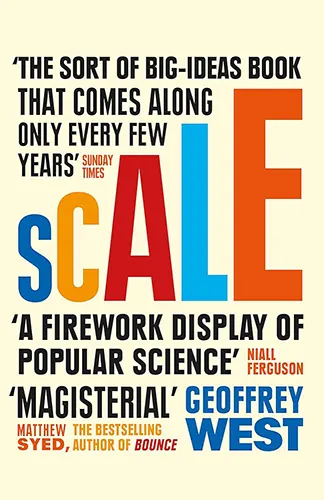
Scale
The Universal Laws of Growth, Innovation, Sustainability, and the Pace of Life in Organisms, Cities, Economies, and Companies
The former head of the Sante Fe Institute, visionary physicist Geoffrey West is a pioneer in the field of complexity science, the science of emergent systems and networks. The term “complexity” can be misleading, however, because what makes West’s discoveries so beautiful is that he has found an underlying simplicity that unites the seemingly complex and diverse phenomena of living systems, including our bodies, our cities and our businesses.

Shamanism, Alchemy, and the Millennium
A whimsical reflection on humanity's journey toward ever-greater connectedness, from the cosmic singularity to the noosphere's fanciful manifestations. Could the shamanic alchemist's mythic intuition, the goddess's wisdom, and capitalism's impatient urge together guide us to the stars and back to Eden? An optimistic revelry.

Solid Emptiness
Alan explores Mahayana Buddhism and the concept of śūnyatā (“emptiness”), emphasizing it as freedom from clinging, not nihilism. He explains how language and the illusion of a separate self cause suffering and contrasts this with the fluid, interconnected reality of life. Enlightenment, he argues, is embracing life’s impermanence without attachment, unlocking creativity, joy, and presence. Far from passive, this mindset energizes individuals, offering a remedy to Western culture’s obsession with control and anxiety.

State of the Stone
In this talk, McKenna gives one of his more hopeful presentations about love and the state of humanity at the end of the millenium.
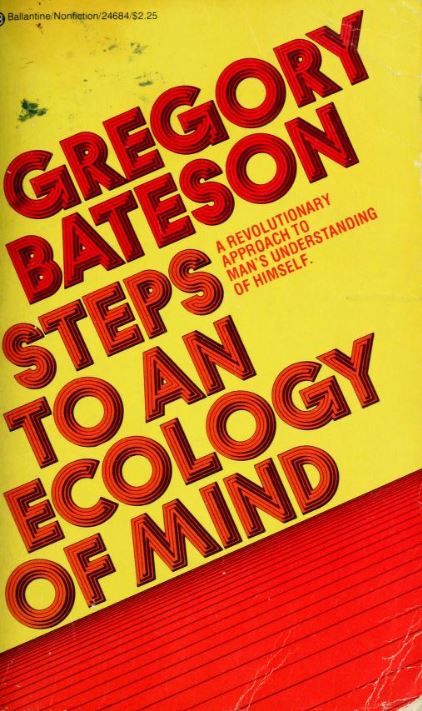
Steps to an Ecology of Mind
Here is the book which develops a new way of thinking about the nature of order and organization in living systems, a unified body of theory so encompassing that it illuminates all particular areas of study of biology and behavior. It is interdisciplinary, not in the usual and simple sense of exchanging information across lines of discipline, but in discovering patterns common to many disciplines.

Swimming Headless
Watts explores the Taoist concept of Te, or virtue, as a kind of natural excellence arising when one lives in harmony with the Tao. He examines how this spontaneous virtue contrasts with contrived virtue, relating it to wu wei and the power that comes from flowing with rather than against the river of existence.

Technology and the Human Environment
Perhaps no futurist has been more energetic, more vocal, more popular, or more optimistic than a seventy-six-year-old engineer-visionary, poet-philosopher named R. Buckminster Fuller. Fuller’s planetary perspective has won him zealous converts the world over. Even those who disagree with his technological transcendentalism share unbegrudged admiration for the world’s youngest old futurist.
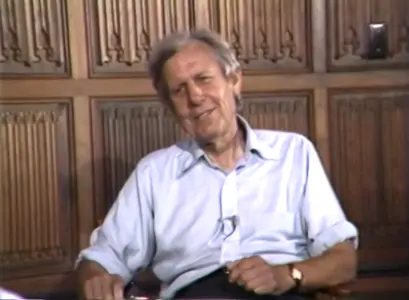
Teilhard de Chardin in the Age of Ecology
Jane Blewett interviews Thomas Berry about Pierre Teilhard de Chardin's philosophy, and how his views should shape the Age of Ecology.

The Advanced Course
Got wisdom? Let Ram Dass be your guide to enlightenment. He takes us on a trip through changing myths, social action, peaceful protests, corporate responsibility, and more. It's all part of life's fascinating dance. Suffering arises when we cling to the intellect. But we find freedom when we open our hearts, embrace oneness and see the perfection in now. So tune in, turn on and wake up! Peace, love and understanding await.
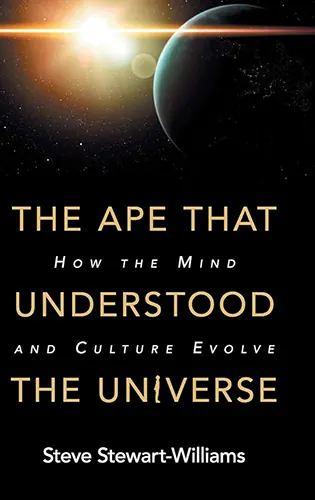
The Ape that Understood the Universe
How the Mind and Culture Evolve
The Ape that Understood the Universe is the story of the strangest animal in the world: the human animal. It opens with a question: How would an alien scientist view our species? What would it make of our sex differences, our sexual behavior, our child-rearing patterns, our moral codes, our religions, our languages, and science? The book tackles these issues by drawing on ideas from two major schools of thought: evolutionary psychology and cultural evolutionary theory. The guiding assumption is that humans are animals, and that like all animals, we evolved to pass on our genes. At some point, however, we also evolved the capacity for culture—and from that moment, culture began evolving in its own right. This transformed us from a mere ape into an ape capable of reshaping the planet, travelling to other worlds, and understanding the vast universe of which we're but a tiny, fleeting fragment.
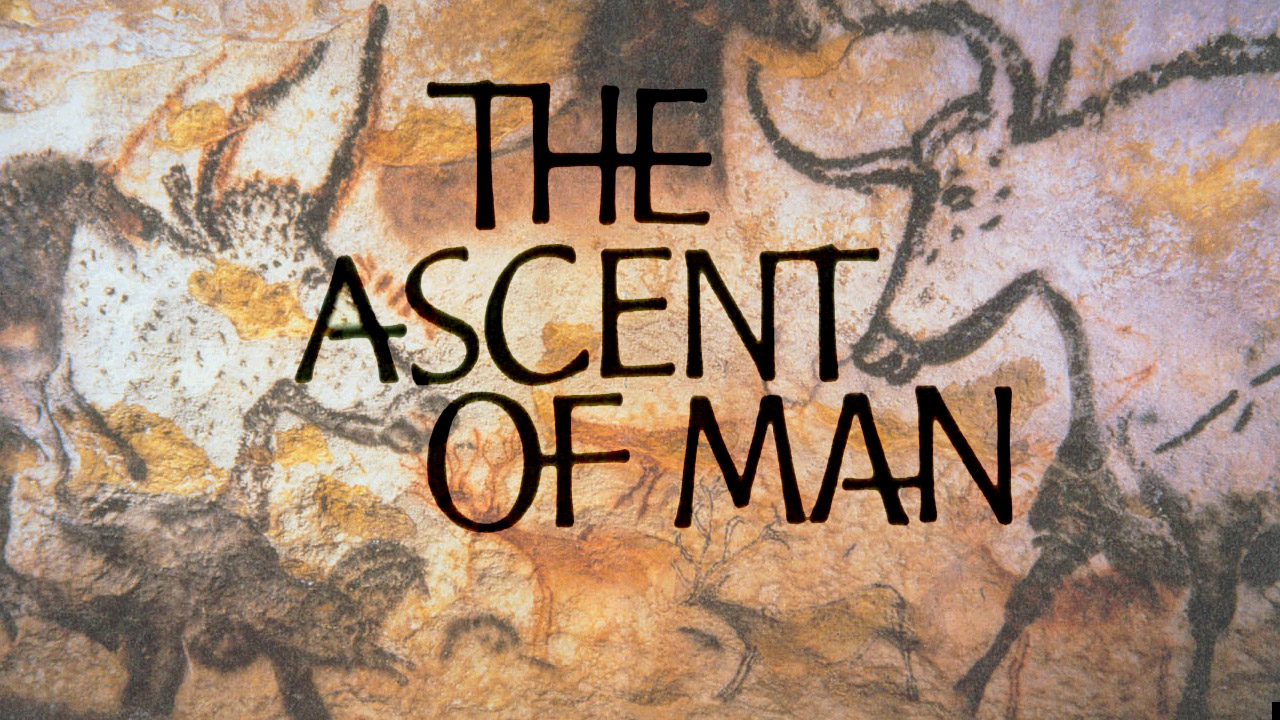
World Within World
The Ascent Of Man, Episode 10
In the vaults of ancient Polish salt mines Bronowski embarks on a journey to the hidden world inside the atom. He traces the history of the men and the ideas that made twentieth-century physics the greatest achievement of the human imagination.
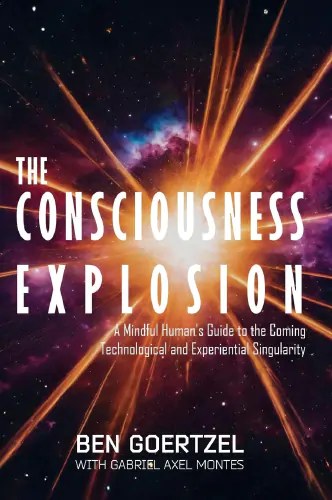
The Consciousness Explosion
A Mindful Human's Guide to the Coming Technological and Experiential Singularity
The pace of engineering and science is speeding up, rapidly leading us toward a technological Singularity—a point in time when superintelligent machines achieve and improve so much so fast, traditional humans can no longer operate at the forefront. However, if all goes well, human beings may still flourish greatly in their own ways in this unprecedented era. If humanity is going to not only survive but prosper as the Singularity unfolds, we will need to understand that the Technological Singularity is an Experiential Singularity as well, and rapidly evolve not only our technology but our level of compassion, ethics and consciousness. Great for curious and open-minded readers who want to wrap their brains around these dramatic emerging changes and empower themselves with tools to adapt and thrive.

The Constitution of Nature
Philosophy: East and West, Program 28
Watts unfurls three cosmic tapestries woven by ancient minds: the Western world's vision of nature stitched as a crafted cloth, India's playful drama where God dances every part, and China's Taoist masterwork of nature flowing free like mountain streams. Though the West's thread gave rise to technological gifts, it tangled our hearts. Now the Orient's ancient organic insight whispers fresh hope, kindling new fires of wisdom within.

The Cybernetic Manifesto
Turchin and Joslyn’s manifesto imagines humanity’s next evolutionary leap: just as cells once united to form complex organisms, they foresee humans merging into “super-beings” through direct neural connections, achieving a form of technological immortality. They argue that evolution’s new frontier isn’t biological, but rather conscious and creative, driven by human will instead of natural selection. While not everyone will choose this path of integration, they suggest it’s those who do who will ultimately explore the cosmos.

The Directions and Conditions of the Future
Teilhard de Chardin envisions human evolution as a purposeful journey guided by three intertwined trends: a natural push toward global unity, technological advances that expand our capabilities, and a deepening of reflective consciousness. Yet, he warns that without a genuine inner cohesion—rooted in love and mutual understanding—these forces may lead to a cold, mechanized future. In his view, our destiny is not random but a guided ascent toward a higher, more meaningful collective awareness.

The Dream of the Earth
Noted cultural historian Thomas Berry provides nothing less than a new intellectual-ethical framework for the human community by positing planetary well-being as the measure of all human activity. Drawing on the wisdom of Western philosophy, Asian thought, and Native American traditions, as well as contemporary physics and evolutionary biology, Berry offers a new perspective that recasts our understanding of science, technology, politics, religion, ecology, and education. He shows us why it is important for us to respond to the Earth’s need for planetary renewal, and what we must do to break free of the “technological trance” that drives a misguided dream of progress. Only then, he suggests, can we foster mutually enhancing human-Earth relationships that can heal our traumatized global biosystem.

The Economics of the Coming Spaceship Earth
The cowboy and the spaceman confront each other in this much-quoted essay by Kenneth E. Boulding, philosopher of the social sciences and intellectual prodder extraordinaire. Do we live on a limitless plain with endless resources, or in an enclosed space capsule in which we recycle—or die?

The Essence of the Democratic Idea
“A biological approach to the problem.” Written in response to a questionnaire from UNESCO and later published in The Future of Man.

The Global Brain as a Model of the Future Information Society
The Global Brain paradigm views the emerging global information network connecting humans and technology as a nervous system for Earth's social superorganism. This special issue surveys opportunities and challenges in developing this potentially more intelligent, synergetic system. Contributions explore political, economic, and philosophical aspects, aiming to guide the transition towards a sustainable society empowering diversity.

The Global Superorganism
An Evolutionary-Cybernetic Model of the Emerging Network Society
The organismic view of society is updated by incorporating concepts from cybernetics, evolutionary theory, and complex adaptive systems. Global society can be seen as an autopoietic network of self-producing components, and therefore as a living system or “superorganism”.

The Great Simplification
A modern take on Pierre Teilhard de Chardin’s The Phenomenon of Man and Peter Russell’s The Global Brain, Nate Hagens describes the “Great Simplification:” an inevitable economic and cultural transition beginning in the not-too-distant future.
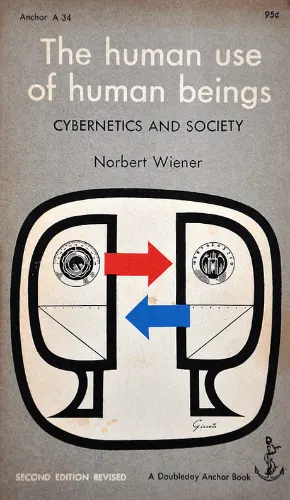
The Human Use of Human Beings
Cybernetics and Society
Wiener was widely misunderstood as one who advocated the automation of human life. As this book reveals, his vision was much more complex and interesting. He hoped that machines would release people from relentless and repetitive drudgery in order to achieve more creative pursuits. At the same time he realized the danger of dehumanizing and displacement. His book examines the implications of cybernetics for education, law, language, science, technology, as he anticipates the enormous impact—in effect, a third industrial revolution—that the computer has had on our lives.
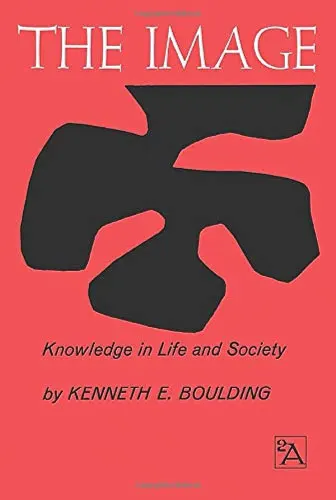
The Image
Knowledge in Life and Society
A thought-provoking exploration of the role of images in shaping human understanding, both individually and collectively. Boulding examines how images, ranging from mental constructs to cultural symbols, influence our perception of reality, guide decision-making, and contribute to the dynamics of society. He delves into the interdisciplinary nature of knowledge, drawing on psychology, sociology, philosophy, and economics, to illustrate how these images shape our behavior, values, and relationships. Boulding's work challenges readers to critically evaluate the power of images in constructing our cognitive landscapes and emphasizes the necessity of a holistic perspective to comprehend the complexities of knowledge within the context of life and society.

The Individual as Man/World
Originally delivered as an impromptu lecture for the Social Relations Colloquium at Harvard University, this essay explores incompatible views of human identity—are we free agents or passive products of external forces? Watts argues we should see ourselves not as isolated egos nor as puppets, but as interdependent “organism-environment fields,” inseparable from our context. This view, he suggests, could bring science and subjective experience into alignment.

The Nature of Living Systems
General systems behavior theory is a set of related definitions, assumptions, and propositions which deal with reality as an integrated hierarchy of organizations of matter and energy. General systems behavior theory is concerned with a special subset of all systems: the living ones. Even more basic to this presentation than the concept of “system” are the concepts of “space,” “time,” “matter,” “energy,” and “information,” because the living systems discussed in this paper exist in space and are made of matter and energy organized by information.
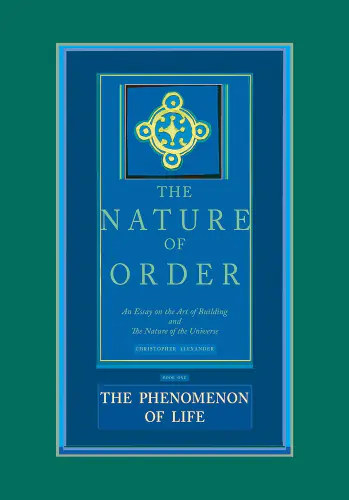
The Phenomenon of Life
The Nature of Order, Volume 1
Christopher Alexander examines why certain built environments possess more “life” than others. Central to his theory is the concept of “centers”—distinct, coherent parts within a larger whole that influence each other’s intensity. He argues that life can be objectively sensed and measured, supported by 15 fundamental geometric properties found in nature and traditional architecture. Alexander contends that these properties, which foster human well-being, have largely vanished in modern design, impacting our connection to built spaces.
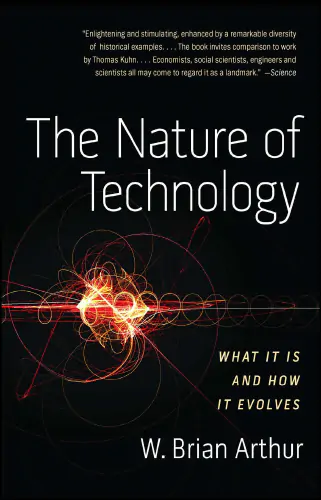
The Nature of Technology
What It Is and How It Evolves
The Nature of Technology reveals technology as a living ecosystem of ideas, where each invention grows from past ones and sparks new possibilities. W. Brian Arthur shows how this self-reinforcing web drives progress, reshapes society, and evolves much like nature itself—messy, unpredictable, and endlessly creative.

The Nature of Things
David Bohm discusses his perspective on theoretical physics and quantum mechanics, including the contradictions between relativity and quantum theory. He explains his theory of the implicate and explicate order to describe the wholeness and interconnectedness of matter. Bohm relates this to consciousness, self-deception in thought, and Krishnamurti's teachings on awareness to transform individual and collective conditioning.
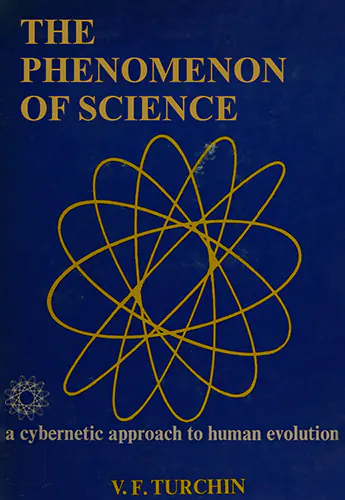
The Phenomenon of Science
A Cybernetic Approach to Human Evolution
Imagine a groundbreaking book that unveils the hidden architecture of intelligence itself. From the humble beginnings of single-cell organisms to the dizzying heights of human culture and science, Valentin Turchin charts the epic journey of cognition. He reveals how each quantum leap in mental prowess—from basic reflexes to abstract reasoning—emerges from a process called “metasystem transitions.” By weaving together cybernetics, evolutionary theory, and the hierarchical nature of mind, Turchin offers a revolutionary perspective on how consciousness evolves. Prepare to see the story of life and thought in an entirely new light.

The Place of Technology in a General Biology of Mankind
Teilhard argues that biology and technology are the same thing: technology is simply advanced biology which has reached a minimum threshold of self-awareness, allowing it to harvest and sheperd energy from its environment and utilize it to intelligently organize matter for further evolutionary development.

The Psychological Conditions of the Unification of Man
Teilhard discusses the objective and subjective conditions necessary for humankind to maintain its passion for unification and progress. Objectively, the universe must be perceived as open and centered towards the future. Subjectively, humanity must develop a heightened sense of the irreversible, the cosmic, and a faith that serves as a driving force for the world's advancement, which he suggests can be found in a properly understood Christianity.
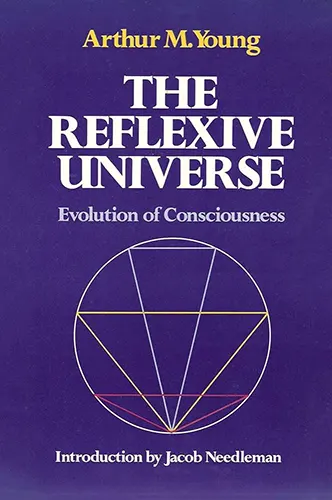
The Reflexive Universe
Evolution of Consciousness
Integrating the findings of modern science with ancient wisdom, this seminal work offers a paradigm for resolving the schism between spirit and matter. Arthur Young’s Theory of Process provides a model for the evolution of consciousness out of light (the quantum of action), offering hope for an age in search of value and meaning.
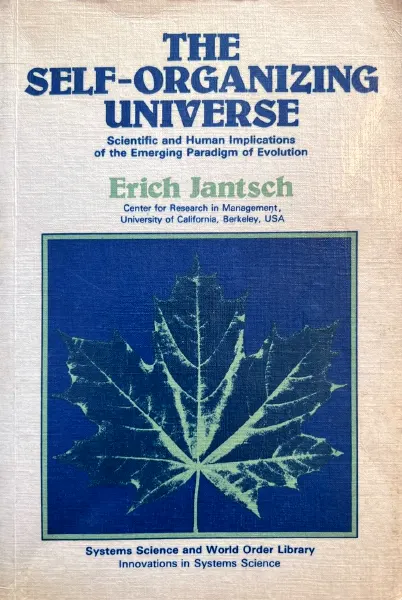
The Self-Organizing Universe
Scientific and Human Implications of the Emerging Paradigm of Evolution
The evolution of the universe—ranging from cosmic and biological to sociocultural evolution—is viewed in terms of the unifying paradigm of self-organization. The contours of this paradigm emerge from the synthesis of a number of important concepts, and provide a scientific foundation to a new world-view which emphasizes process over structure, nonequilibrium over equilibrium, evolution over permanency, and individual creativity over collective stabilization. The book, with its emphasis on the interaction of microstructures with the entire biosphere, ecosystems etc., and on how micro- and macrocosmos mutually create the conditions for their further evolution, provides a comprehensive framework for a deeper understanding of human creativity in a time of transition.
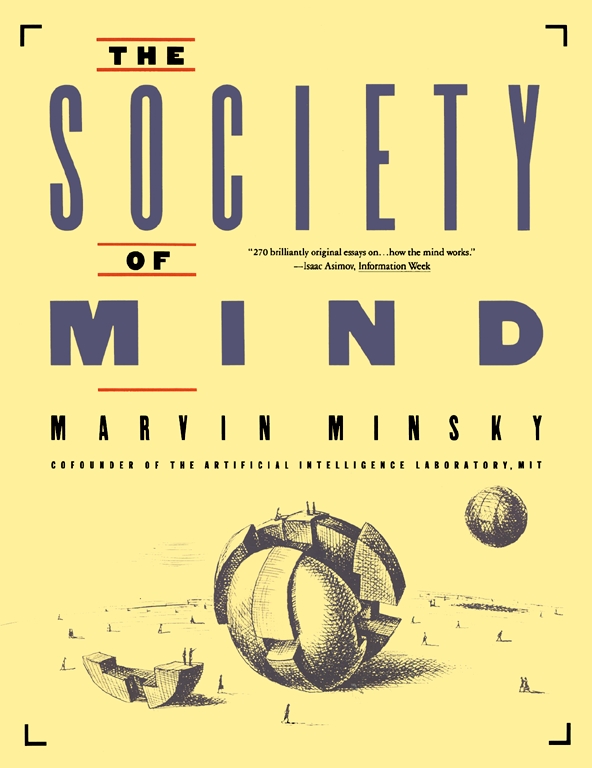
The Society of Mind
Marvin Minsky (one of the fathers of computer science and cofounder of the Artificial Intelligence Laboratory at MIT) gives a revolutionary answer to the age-old question: How does the mind work? Minsky brilliantly portrays the mind as a 'society' of tiny components that are themselves mindless. Mirroring his theory, Minsky boldly casts The Society of Mind as an intellectual puzzle whose pieces are assembled along the way. Each chapter, presented on a self-contained page, corresponds to a piece in the puzzle. As the pages turn, a unified theory of the mind emerges, like a mosaic. Ingenious, amusing, and easy to read, The Society of Mind is an adventure in imagination.

The Symbolic and the Real
Though symbols empower us, they veil our oneness with the Infinite. Disconnection brings madness. Let us instead affirm our individuality while tasting universality, knowing we are the cosmos branching out to behold itself. We wave as the cosmos waves, seeding selves yet sprouted from the Source. Not apart but of the Whole, we wander home.

The Task of the Prophet
Philosophy: East and West, Program 7
Mankind should give up the foolish fascination with horror. Alan Watts asks us to woo, trust, and reason about good news.

The Transition from the Biosphere to the Noösphere
Vernadsky explores how human knowledge transforms Earth’s biosphere into the “noosphere,” a new geological state driven by science and culture. He highlights how life, especially human activity, reshapes the planet through energy and innovation, from ancient fire mastery to modern technology. This dynamic interplay between life and Earth reveals a fascinating, ever-evolving story of our planet’s history and humanity’s profound impact on its future.

The Universe Enlightened
Harding argues that awakening isn’t private but cosmic: to truly know yourself is to rediscover a living, intelligent universe. Modern science, he claims, quietly supports this ancient vision. When the illusion of a separate self dissolves, the universe itself wakes up as home, alive and coherent.

The Universe in Consciousness
Imagine a world where everything is connected by a single mind: Bernardo Kastrup argues that reality is fundamentally mental, not physical. He suggests that what we perceive as individual consciousness is actually fragments of a universal consciousness. Kastrup challenges the mainstream view of materialism, proposing instead that the mind is the primary substance of the universe. By integrating concepts from psychology, neuroscience, and philosophy, he presents a compelling case for a mental universe, urging us to rethink our understanding of reality.

The World is a Network
In this discussion, Fritjof Capra discusses systems thinking, the cognitive dimension of life, nonlinear causality, emergence of novelty in living systems, ethics, world problems and solutions, transformative learning, and the importance of community. He covers the systems view of life from his book and emphasizes relationships, interconnectedness, and sustainability.
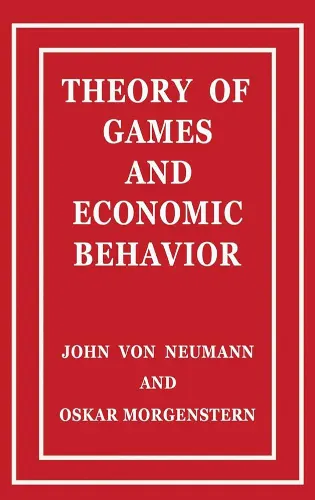
Theory of Games and Economic Behavior
This is the classic work upon which modern-day game theory is based. What began more than sixty years ago as a modest proposal that a mathematician and an economist write a short paper together blossomed, in 1944, when Princeton University Press published Theory of Games and Economic Behavior. In it, John von Neumann and Oskar Morgenstern conceived a groundbreaking mathematical theory of economic and social organization, based on a theory of games of strategy. Not only would this revolutionize economics, but the entirely new field of scientific inquiry it yielded—game theory—has since been widely used to analyze a host of real-world phenomena from arms races to optimal policy choices of presidential candidates, from vaccination policy to major league baseball salary negotiations. And it is today established throughout both the social sciences and a wide range of other sciences.

Thinking in Systems
A Primer
Donella Meadows provides an accessible introduction to systems thinking, explaining how to understand complex systems and interact within them more effectively. She describes different types of systems, including physical and social systems, and key system concepts like stocks, flows, feedback loops, leverage points, and delays. Meadows illustrates these ideas through real-world examples and models, and argues that adopting a systems perspective can help address many of society's challenges in areas like sustainability, politics, and business. She aims to teach readers to think broadly about interconnections, change over time, and root causes so they can better understand and influence systems for desired outcomes.

Transformation of Consciousness
Alan discusses the different states of consciousness which the human mind can attain, and some of the chemical compounds which may serve as tools to reach these mental realms.

Truth and Relativity
Philosophy: East and West, Program 14
Through the example of a city, Alan encourages his listeners to reevaluate the definition of their personal identities. Is a person a fully autonomous agent, or might they be a cell in a vast organism? Perhaps it’s necessary to understand both perspectives and recognize that each scale of magnitude depends on all others to manifest as it does.

Turmoil or Genesis?
The Position of Man in Nature and the Significance of Human Socialization
Is there in the universe a main axis of evolution? Pierre Teilhard de Chardin argues for the centrality and progressive direction of life, human thought, and social bonds in cosmic unfolding. His four propositions lead to the bold claim that Christianity drives humanity's spiritual ascent, culminating in a transcendent fulfillment.

Turning the Head, or Turning On
Talking to an audience at San José State University, Alan Watts recounts the first time he tried consciousness-altering substances after meeting Aldous Huxley. He argues that Western society largely isn’t ready for the mystical experience which can be triggered in these mental states, but nonetheless advocates for them, as they may arouse positive transformation in the human collectivity.

Understanding the Chaos at History's End
Delivered at the end of McKenna’s first month as scholar-in-residence at Esalen, when he began a new phase in his public speaking career. This weekend workshop provides an early glimpse at Terence’s description of the looming “transcendental object at the end of time,” and the psychedelic insights which led him to become an oracle.

Way Beyond Seeking
Alan reflects on key principles of Taoism, noting how even a fruit fly views itself as the pinnacle of creation—just as humans do. He explains how opposites like yin and yang rely on each other, like two sticks held in balance. Watts cautions against relying too heavily on words to capture life’s complexity. Yet, through stories and logic, he gently encourages us to embrace non-action, trust intuition, stay humble, and recognize our connection with nature. Taoist ideas to reflect on and savor.
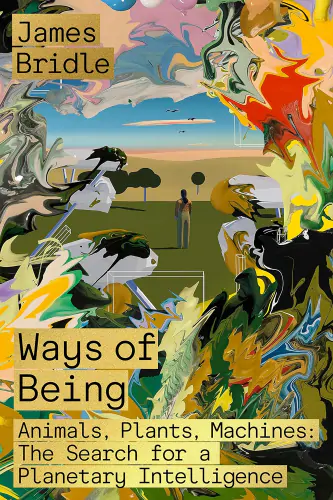
Ways of Being
Animals, Plants, Machines: The Search for a Planetary Intelligence
What does it mean to be intelligent? Is it uniquely human, or shared with other beings—animals, plants, machines? As AI advances, it becomes a strange, even alien force, challenging our place in the world. Meanwhile, other intelligences—natural systems we’ve overlooked—reveal their agency and complexity. In Ways of Being, James Bridle explores these intelligences through biology, physics, and art, urging us to rethink our technologies and societies for a more equitable coexistence with the nonhuman world. Bold and thought-provoking, it’s essential for our survival.

What Exactly is the Human Body?
Teilhard muses on the perplexities of defining the human body. He finds the common notions inadequate and proposes a new perspective—that each person's body encompasses not just their cells, but the entire universe they influence and are influenced by. Though complex, his ideas offer an intriguing new angle on embodiment.
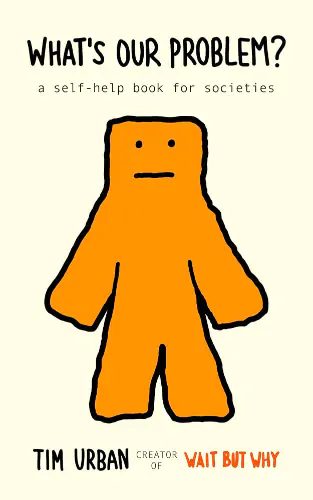
What's Our Problem?
A Self-Help Book for Societies
What's Our Problem? is a deep and expansive analysis of our modern times, in the classic style of Wait But Why, packed with original concepts, sticky metaphors, and 300 drawings. The book provides an entirely new framework and language for thinking and talking about today's complex world. Instead of focusing on the usual left-center-right horizontal political axis, which is all about what we think, the book introduces a vertical axis that explores how we think, as individuals and as groups. Readers will find themselves on a delightful and fascinating journey that will ultimately change the way they see the world around them.

Why Is Anything Conscious?
This paper tackles the hard problem of consciousness by exploring how biological systems evolve to interpret the world. The authors argue that natural selection makes organisms self-organize into systems that feel, learn, and act—starting with basic self-awareness and climbing to complex human-level understanding. Their bold claim? Consciousness isn't an add-on but a deep, essential part of how life adapts to survive.

Why a Science of Mind Implies the Transcendence of Nature
God and Computers: Minds, Machines, and Metaphysics (Part 5)
Have you ever wondered how your brain creates your conscious experience? Francisco Varela explores the intersection of science and spirituality, offering a fresh perspective on the age-old mind-body problem. Drawing inspiration from Buddhist teachings, he argues that our everyday human experience is the key to unlocking the mysteries of consciousness. Varela proposes a research program called neurophenomenology, which aims to bridge the gap between brain activity and subjective experience. Through engaging examples and insightful explanations, he demonstrates how the exploration of consciousness can lead to both scientific advancements and a deeper understanding of ourselves.

Wider Than the Sky
The Phenomenal Gift of Consciousness
How does the firing of neurons give rise to subjective sensations, thoughts, and emotions? How can the disparate domains of mind and body be reconciled? The quest for a scientifically based understanding of consciousness has attracted study and speculation across the ages. In this direct and non-technical discussion of consciousness, Dr. Gerald M. Edelman draws on a lifetime of scientific inquiry into the workings of the brain to formulate answers to the mind-body questions that intrigue every thinking person. Concise and understandable, the book explains pertinent findings of modern neuroscience and describes how consciousness arises in complex brains. Edelman explores the relation of consciousness to causation, to evolution, to the development of the self, and to the origins of feelings, learning, and memory. His analysis of the brain activities underlying consciousness is based on recent remarkable advances in biochemistry, immunology, medical imaging, neuroscience, and evolutionary biology, yet the implications of his book extend farther―beyond the worlds of science and medicine into virtually every area of human inquiry.

World Wide Brain
The Emergence of Global Web Intelligence and How it Will Transform the Human Race
Ben Goertzel says the Internet is evolving towards a “global Web mind”–an emergent, distributed intelligence surpassing human capabilities. This development, grounded in complexity science, could solve AI’s scalability issues and merge humanity with technology. While potentially solving global problems, it raises concerns about individual freedom. Drawing parallels with spiritual concepts like the noösphere and collective unconscious, this evolution is seen as inevitable and transformative. As we nurture this new form of life, we stand at the threshold of a profound shift in human consciousness and global interconnectedness.

World as Consciousness
Alan Watts guides us through Mahayana Buddhism to reveal that the world is not something we passively witness, but something we actively create—moment by moment. Wake up: reality is now, consciousness is all, and you are the dance itself.

World as Play
Watts presents a core Eastern philosophy of the world as a dramatic illusion, and that it exists for no other reason except to be experienced in a playful manner.